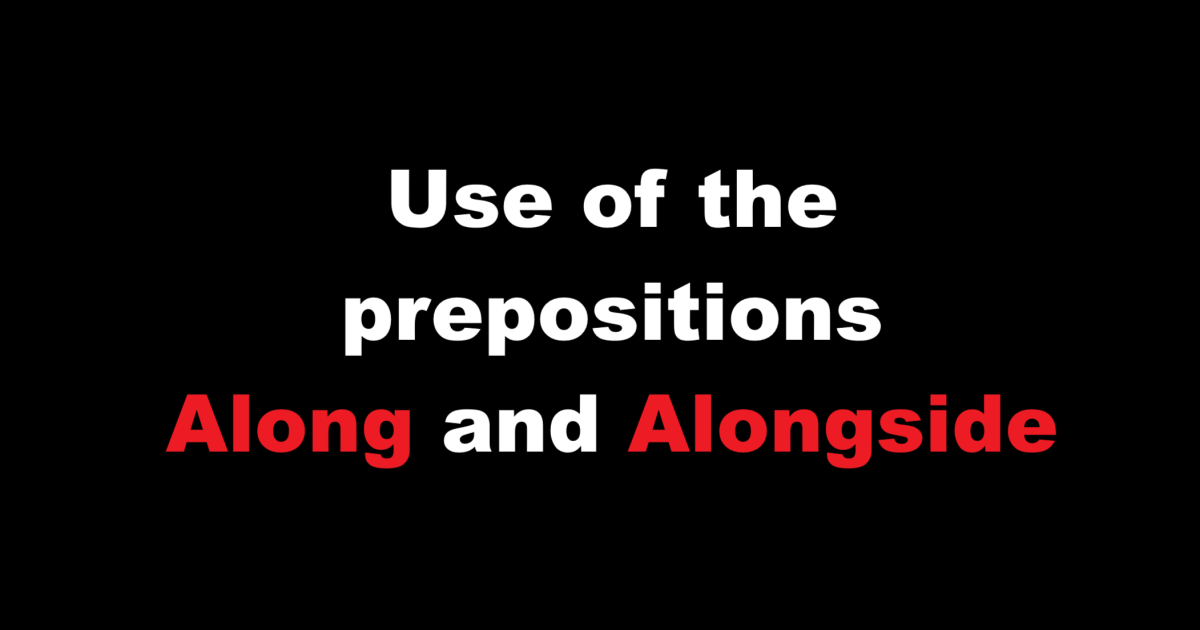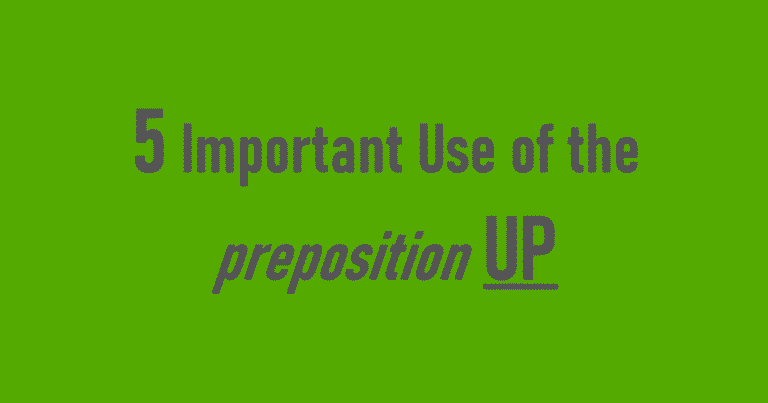Use of the prepositions Along and Alongside. The English language, with its rich tapestry of words, often presents us with subtle but significant distinctions between seemingly similar terms. “Along” and “Alongside” are two such prepositions. While both convey a sense of proximity and parallel movement or positioning, their specific applications and connotations differ, influencing the meaning and clarity of our sentences. This comprehensive guide will delve into the nuances of “along” and “alongside,” equipping you with the knowledge to use them effectively and confidently.
Use of the prepositions Along and Alongside
Understanding “Along”: The Broad Brushstroke of Proximity and Movement
“Along” is a versatile preposition that expresses movement, position, or direction in a linear fashion. It implies a journey or placement that follows the length of something, be it a physical object, a path, or even an abstract concept. Its flexibility stems from its ability to depict both static position and dynamic movement.
1. Movement in a Direction Parallel to Something:
The most common usage of “along” involves motion following the length of a defined path. Think of a river, a road, or a fence.
- Examples:
- “We walked along the beach, enjoying the sunset.” (Movement parallel to the beach)
- “The train sped along the tracks.” (Movement parallel to the railway tracks)
- “The car drove along the winding mountain road.” (Movement parallel to the road)
In these cases, “along” highlights the continuous movement that follows the established trajectory of the object being referred to.
2. Position in Relation to the Length of Something:
“Along” can also indicate a static position located somewhere on the length of something. This is less about movement and more about a location along a line.
- Examples:
- “There are several restaurants along Main Street.” (The restaurants are located at various points along the length of Main Street.)
- “The village stretched along the riverbank.” (The village’s position follows the length of the riverbank.)
- “He has shops along the coast.” (The shops are situated at different locations on the coast.)
Here, “along” indicates a distribution or arrangement of something across the length of another thing.
3. Adding Something to Existing Ideas or Activities:
Beyond its spatial uses, “along” can be used to indicate the addition of something to an existing process, activity, or idea. It implies joining in or bringing something into the existing flow.
- Examples:
- “Feel free to bring your friends along to the party.” (Adding friends to the existing group of partygoers.)
- “She brought her own ideas along to the discussion.” (Adding new ideas to the existing conversation.)
- “The company hired a marketing expert to help them move the project along.” (Adding expertise to accelerate the project’s progress.)
This usage of “along” is more figurative, focusing on contribution and integration.
4. “Get Along” and “Come Along”: Idiomatic Expressions:
“Along” is a key component in several common idiomatic expressions, with meanings that are often unrelated to its literal spatial senses.
- Get along: To have a good relationship with someone. “They get along really well.”
- Come along: To accompany someone; to progress. “Are you coming along to the concert?” “The project is coming along nicely.”
Understanding these idiomatic uses is crucial for comprehending spoken and written English.
Delving into “Alongside”: A Focus on Direct Proximity and Parallel Alignment
While “along” suggests a general path or positioning, “alongside” implies a much closer relationship. It emphasizes direct proximity and a parallel alignment, often with a connotation of being side-by-side. “Alongside” often conveys a more intentional positioning.
1. Positioned Side-by-Side:
The primary meaning of “alongside” is to be positioned immediately next to something, often implying parallel alignment. This emphasizes the close proximity and the shared direction or orientation.
- Examples:
- “The ship docked alongside the pier.” (The ship is right next to the pier, parallel to it.)
- “He parked his car alongside mine.” (His car is parked immediately next to my car.)
- “She sat alongside her mother on the bench.” (She sat right next to her mother.)
The key here is the direct adjacency and the parallel nature of the positioning.
2. Working or Operating Concurrently:
“Alongside” can also be used to express working or operating at the same time as something else, implying a collaborative or simultaneous effort.
- Examples:
- “The researchers worked alongside each other to find a cure.” (They worked together, simultaneously, on the same goal.)
- “She learned the trade by working alongside a master craftsman.” (She learned through direct observation and participation, simultaneously with the craftsman.)
- “The new software will run alongside the existing system for a trial period.” (Both systems will operate at the same time during the trial.)
This usage highlights the synchronized or collaborative nature of the activities.
3. Figurative Usage: In Addition To; Besides:
Less commonly, “alongside” can be used figuratively to mean “in addition to” or “besides.” This usage is often found in more formal writing.
- Example: “He possessed intelligence alongside courage.” (He had both intelligence and courage.)
However, this usage is often replaceable with simpler prepositions like “besides” or “in addition to,” making it less frequent in modern English.
Key Differences and When to Choose Which
Here’s a table summarizing the key differences to help you choose between “along” and “alongside”:
| Feature | Along | Alongside |
|---|---|---|
| Proximity | The ship docked alongside a pier, working alongside a colleague. | Direct proximity; immediately next to something, often parallel. |
| Emphasis | Emphasizes movement, direction, or position following a path or length. | Emphasizes close proximity, parallel alignment, and often simultaneous action. |
| Typical Use | The ship docked alongside a pier, and I worked alongside a colleague. | Walking along a road, houses along a river, and bringing someone along. |
| Figurative Use | More frequent figurative uses, especially in idioms like “get along” and “come along.” | Less common figurative use; often replaceable with “in addition to.” |
In essence:
- Use “along” when you want to describe movement or position following the length of something, or when referring to additions or idioms.
- Use “alongside” when you want to emphasize direct proximity, parallel alignment, or simultaneous action.
Examples Illustrating the Difference:
- “We walked along the river.” (We walked following the path of the river, but not necessarily right next to it.)
- “We walked alongside the river.” (We walked directly next to the riverbank.)
- “The houses are along the coast.” (The houses are located at various points on the coast.)
- “He built a small shed alongside his house.” (The shed is built right next to his house.)
Common Mistakes to Avoid:
- Using “alongside” when “along” is more appropriate: Avoid using “alongside” when you simply want to describe movement or position that follows the length of something without emphasizing direct proximity. For example, “The road runs alongside the valley” is less common and less precise than “The road runs along the valley.”
- Confusing “along” with “across”: “Along” implies movement or position following the length of something, while “across” implies movement or position going from one side to the other.
Conclusion:
Mastering the subtle differences between “along” and “alongside” can significantly improve the clarity and precision of your writing and speaking. By understanding their nuances and considering the context in which they are used, you can confidently choose the most appropriate preposition to convey your intended meaning. This guide provides a solid foundation for navigating these linguistic intricacies, allowing you to communicate more effectively and enrich your command of the English language. Remember to practice and observe how native speakers use these prepositions, and you’ll soon be using them with ease and accuracy.
Use of the prepositions Along and Alongside
- Use of the preposition above
- Use of the preposition about
- What is Religion
- News in Hindi
- Human vs AI
- Very Important Word Lists
Use of the prepositions Along and Alongside | Use of the prepositions Along and Alongside | Use of the prepositions Along and Alongside | Use of the prepositions Along and Alongside



